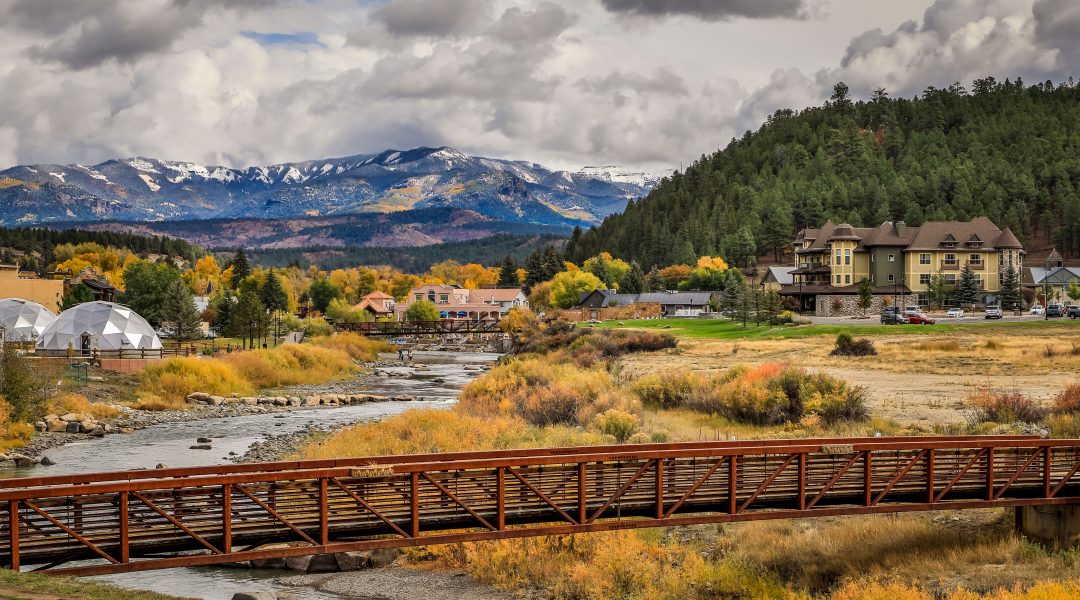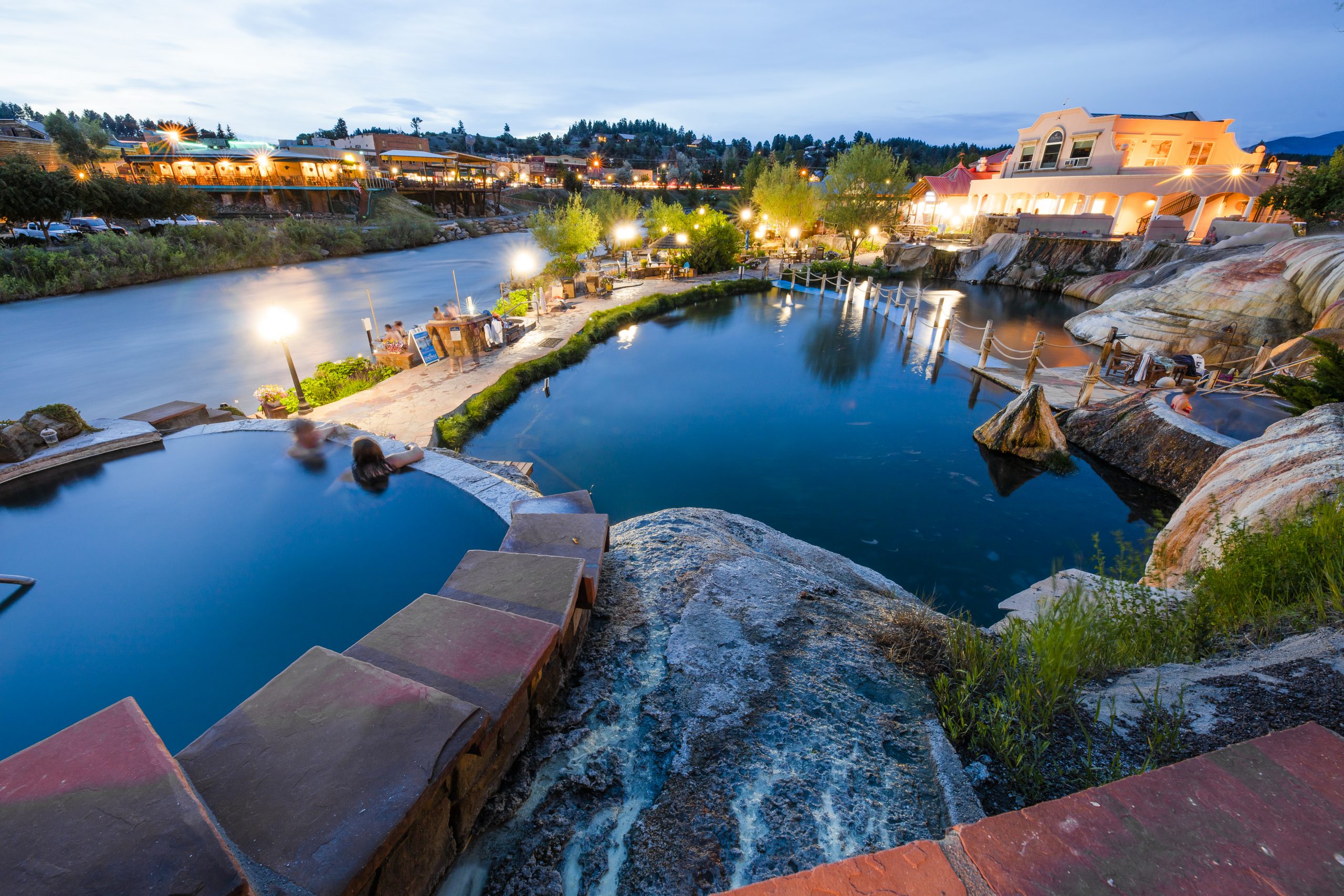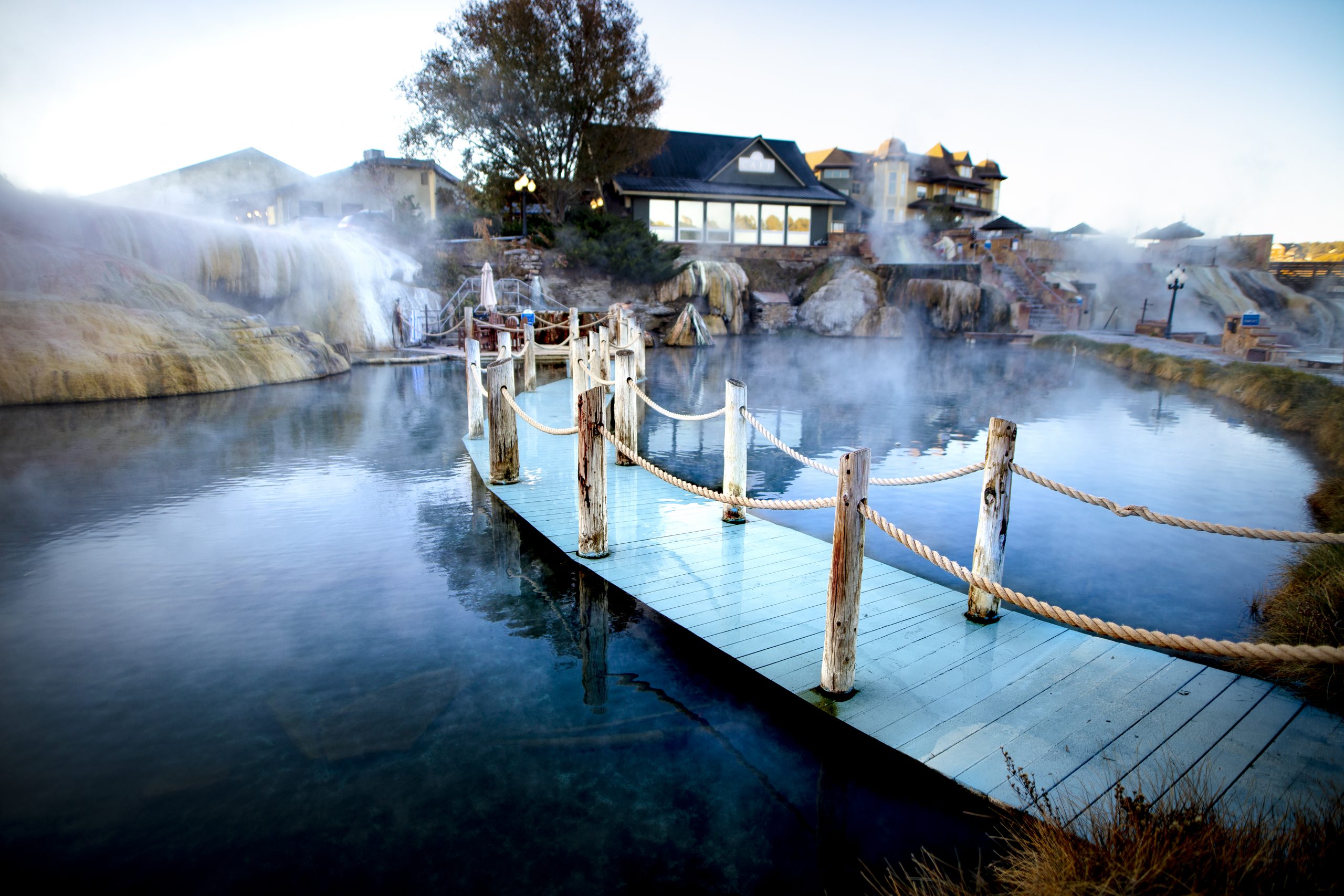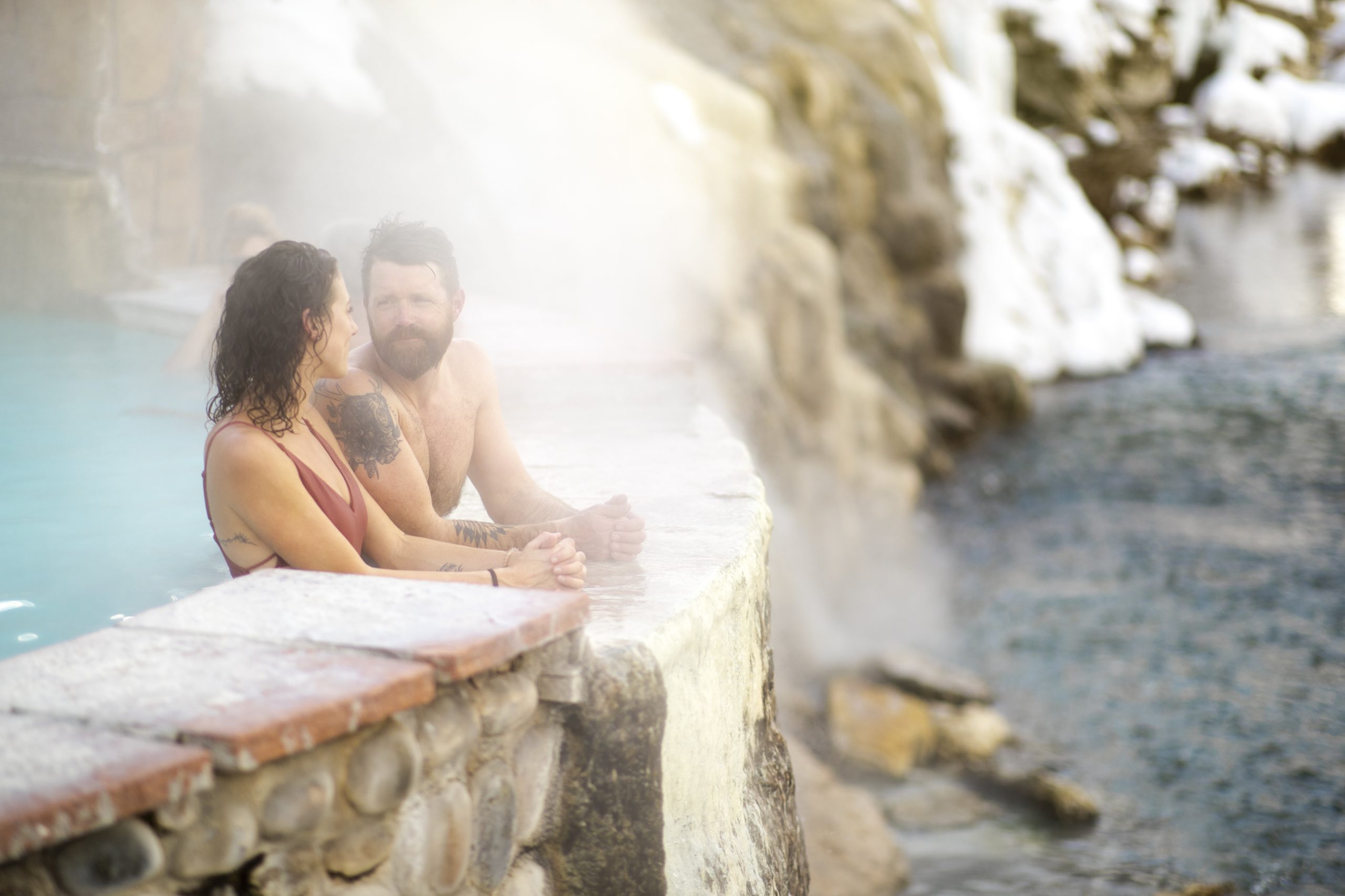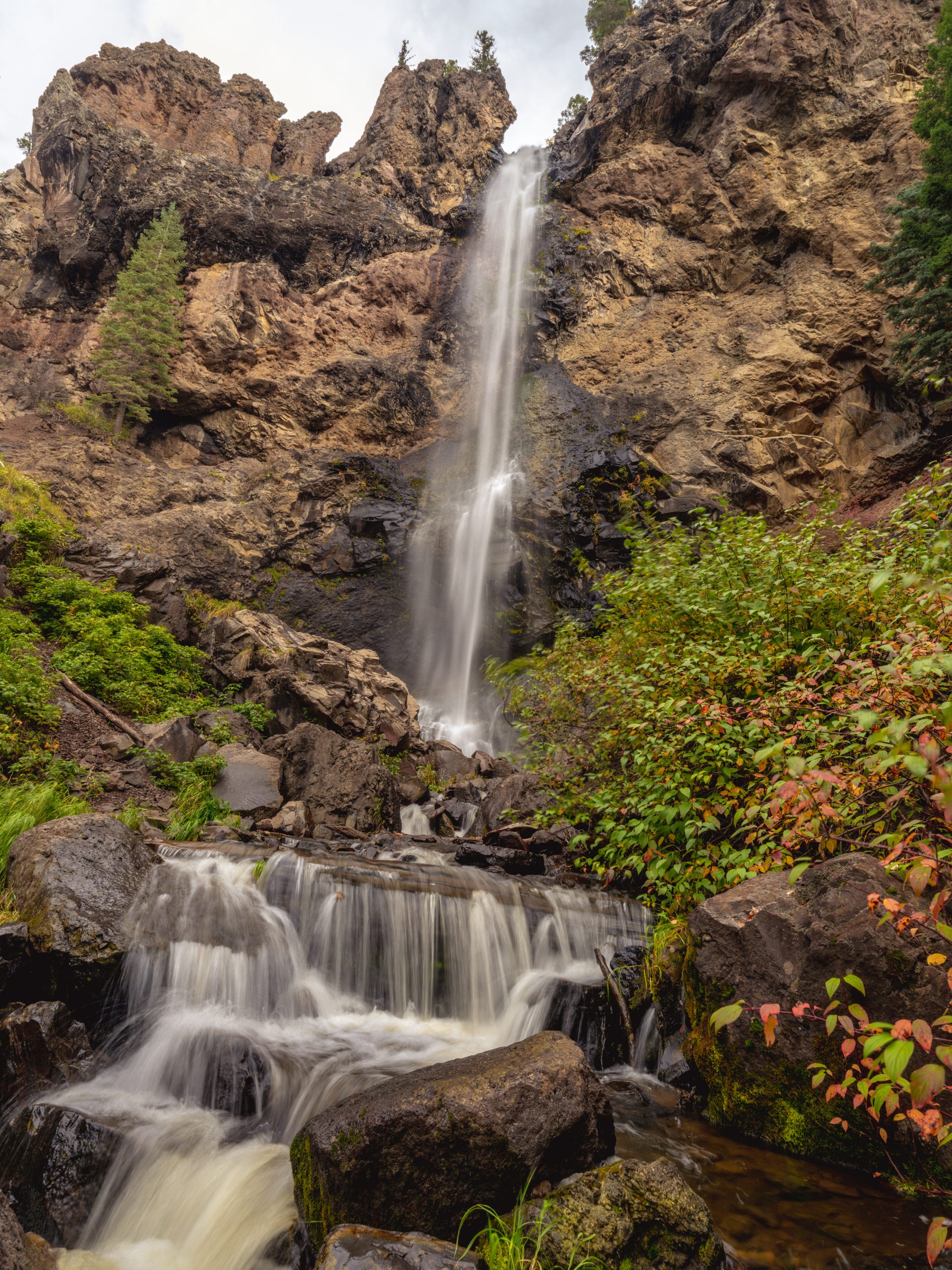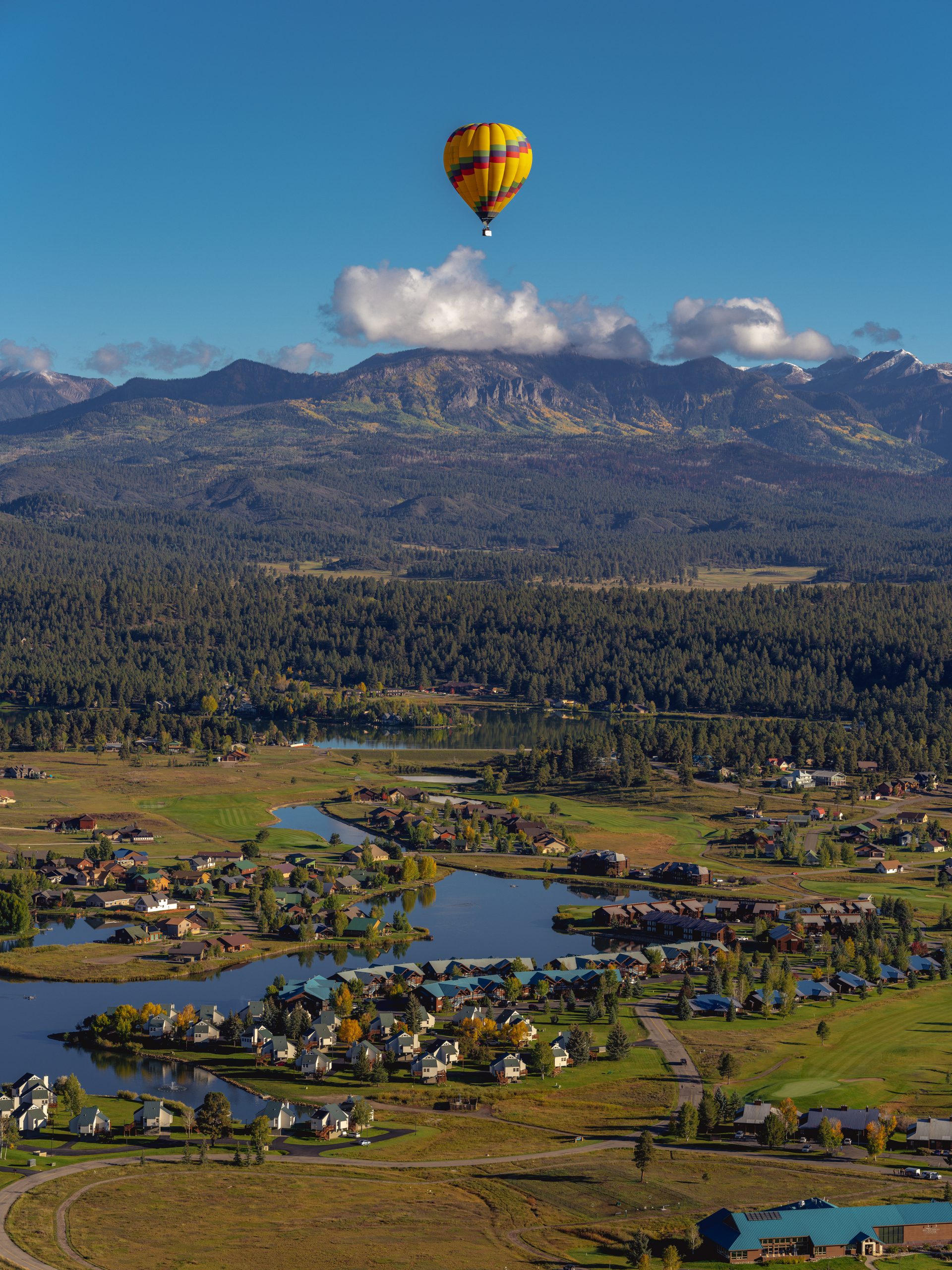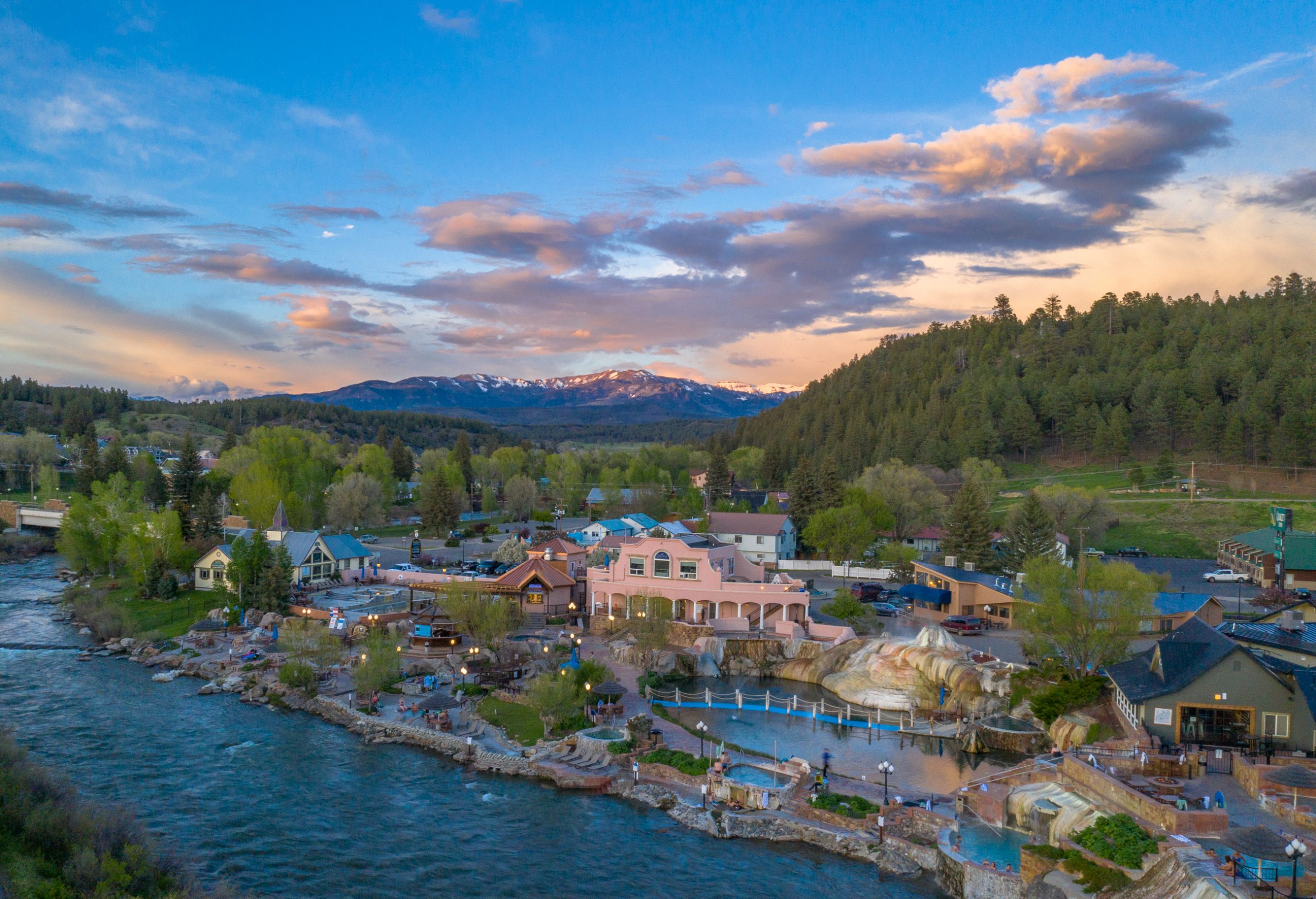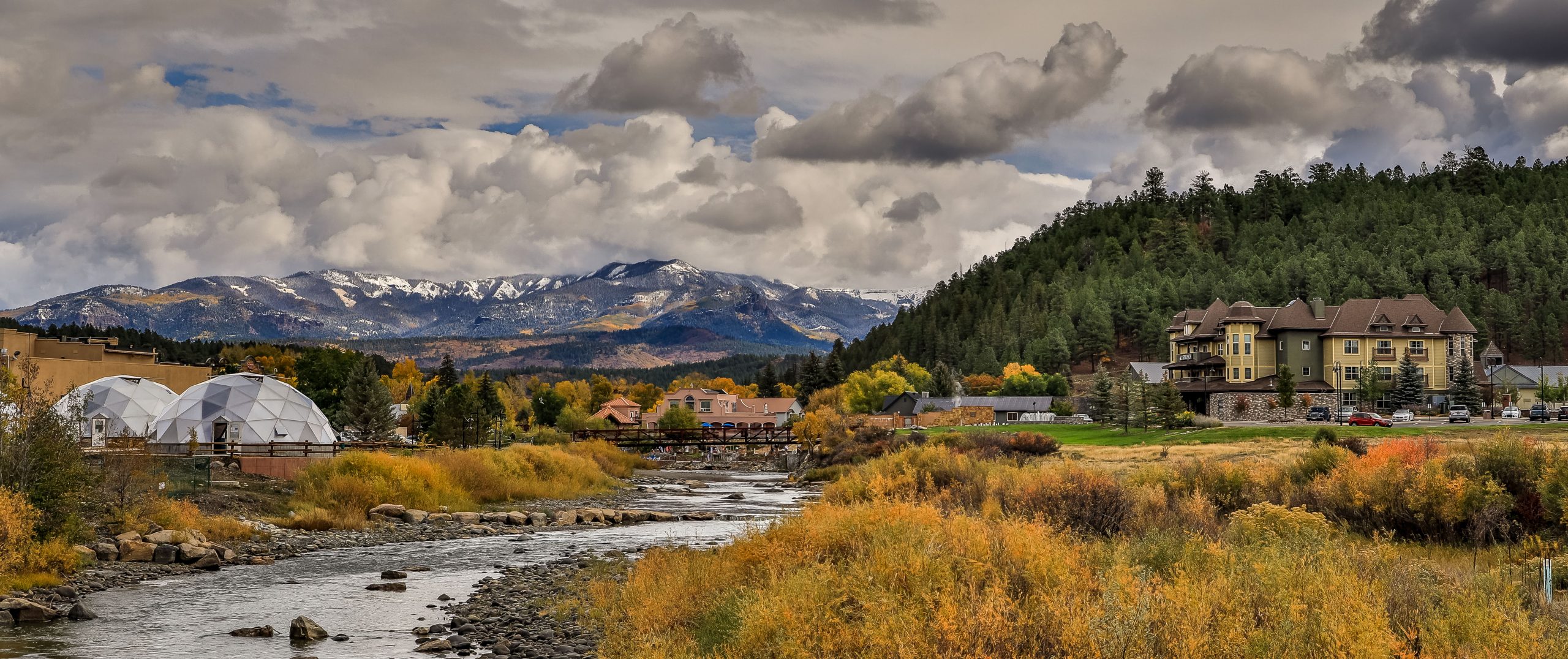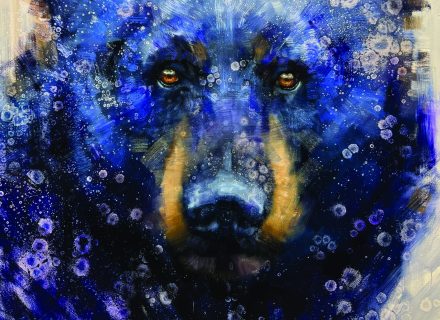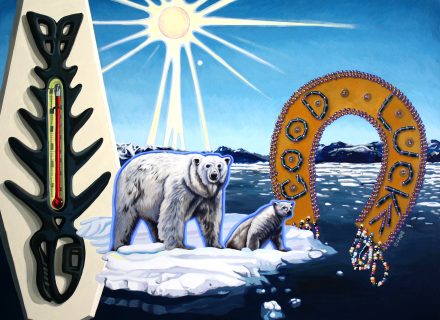Pagosa Springs, Colorado, is all about soaking in the hot springs, soaring in the blue skies, and healing in the forested mountains.
Ten minutes of soaking in a pool of hot mineral water at a riverside resort in Pagosa Springs, Colorado, has turned me into a perfectly cooked noodle.
But I haven’t come to The Springs Resort & Spa just to bob like a dumpling in a vat of hot broth. I’m here to do what’s called the Warrior Plunge, sure to improve my circulation and improve post-exercise recovery. And so I tiptoe down the sidewalk and plop myself into a rock-lined alcove in the San Juan River, where water temperatures are currently hovering at a brisk 48 degrees. It momentarily takes my breath away, but after a three-minute dunk, I feel like Popeye right after he downed a can of spinach.
The springs are just one stop on my tour of this eclectic little town tucked in the San Juan Mountains of southwestern Colorado. I’ve also got plans to explore the surrounding area by foot, hot-air balloon, and hammock.
But first, some background. The city of Pagosa Springs gets its name from the deep geothermal springs that boil up from the ground along the banks of the river where I’m (literally) chilling out. Centuries ago, the Ute people who lived in the region revered the hot springs for what they believed were healing powers in the pungent-smelling waters, which contain 13 minerals. In fact, Pagosa is a Ute word meaning “healing” or “boiling water.” Frequented by many tribes, the area was for a time in the possession of Mexico, till they ceded it to the United States in 1848. Visitors still seek out the hot water to ease muscle soreness, reduce inflammation, and improve sleep quality.
Some, like me, also make it a mission to dip a toe in all 25 soaking pools at The Springs Resort. (My favorite so far? One named Aspen, tucked behind some trees.)
Earlier, I channeled my inner mudpie maker and slathered myself with Mother’s Milk, a blend of gray-green clay from the Mojave Desert and water from the burbling source of hot water known as the Mother Spring. I also took a tiny sip of the sulphury-smelling water pulled from the steaming natural cauldron during a gratitude ceremony held here daily.
These are the deepest known geothermal springs in the world. In 2012, researchers trying to verify the claim for Guinness World Records ran out of plumb line at 1,002 feet — and they still hadn’t reached the bottom. The hot water is used to heat downtown sidewalks and dome-shaped community greenhouses along the river during the winter and even contributes to at least one local libation. Riff Raff Brewing Company, housed in an old Victorian house, claims it’s the first brewery to use geothermally heated water to brew “earth-powered” beer.
But Pagosa Springs is about more than hot water, and I’m here to take it all in. My agenda includes a forest-bathing session and some good old-fashioned dozing, which I do for a blissful hour in a hammock under swaying pine trees while someone plays Tibetan singing bowls.
Another day I decide I need a bird’s-eye view of the area, so I float through the surrounding valley aboard a red, yellow, and blue balloon from Rocky Mountain Balloon Adventures. From my new perspective, I see a tiny, coin-size lake, speck-size humans, and a ring of snowcapped mountains in the distance.
One beautiful evening, I spend a few hours hiking around Chimney Rock, where Ancestral Puebloans built homes and ceremonial sites hundreds of years ago. And after the sun sets, I stand outside, a scarf wrapped around my neck, and stare at a million stars glittering against a black velvet sky.
I don’t have time to do it all this time, but I’m already plotting a return trip to Pagosa Springs. Then I’ll be sure to visit Treasure Falls, a 105-foot cascade located about 15 miles northeast of Pagosa Springs on Highway 160. Rumor has it a cache of gold nuggets may be hidden somewhere near that waterfall.
“We have people come here and spend the whole summer trying to find the different treasures,” says Ann Oldham, who works at the San Juan Historical Museum in Pagosa Springs. As the legend goes, a group of Frenchmen found gold and hid it in the area in the late 1700s. Native Americans and Spaniards killed the prospectors, but nearly a century later, a second group of Frenchmen returned to collect the loot. They were also attacked and killed — all but one, who happened to share my last name, LeBlanc.
Monsieur LeBlanc supposedly had a treasure map, but so far, no gold has surfaced. With my last name, though, maybe I’ve got a chance.
For more information about Pagosa Springs head to pagosahotsprings.com.
This article appears in our July 2023 issue, available now on newsstands and through our C&I Shop.






